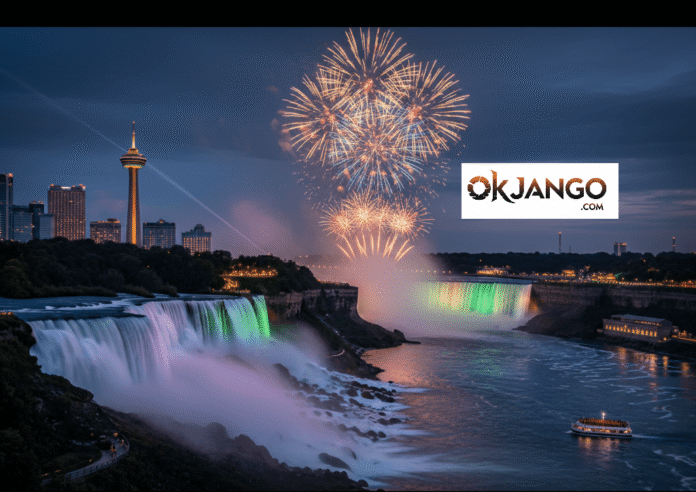Forget everything you think you know about a waterfall.
Imagine a force of nature so immense it shakes the very ground beneath your feet and sends a constant roar through the air. That’s Niagara Falls.
Niagara Falls is not just a magnificent cascade of water; it’s a testament to the power of nature and a rich tapestry of history and shared resources.
Straddling the border between Canada and the United States, these iconic waterfalls have captivated millions of visitors for centuries.
Location: A Border Between Two Nations
For anyone unfamiliar with its geography, the location of Niagara Falls is one of its most defining and fascinating features.
Niagara Falls is not a destination in one country, but a magnificent natural wonder that two nations share.
The falls sit directly on the international border between Canada and the United States.
They are part of the Niagara River, which acts as a natural separator between the two countries. This unique positioning means there are two cities, each with the same name, on opposite sides of the river:
- On the Canadian side, you’ll find Niagara Falls, Ontario.
- On the American side, you’ll find Niagara Falls, New York.
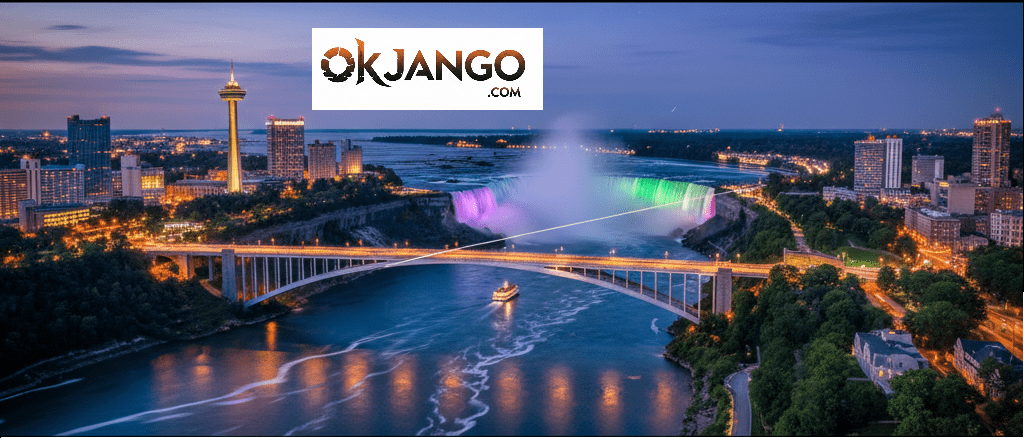
This shared location allows for two distinct perspectives of the falls.
From the Canadian side, you get a panoramic view of both the American and Horseshoe Falls, while the American side offers an up-close-and-personal experience with the American Falls and the thunderous rapids of the river.
The Rainbow Bridge connects the two sides, allowing visitors to easily cross and experience both perspectives (with a valid passport, of course!).
A Geological Wonder: How the Niagara Falls Formed
The story of Niagara Falls began over 12,000 years ago at the end of the last Ice Age.
As the immense glaciers melted and retreated, they carved out the Great Lakes and the Niagara River.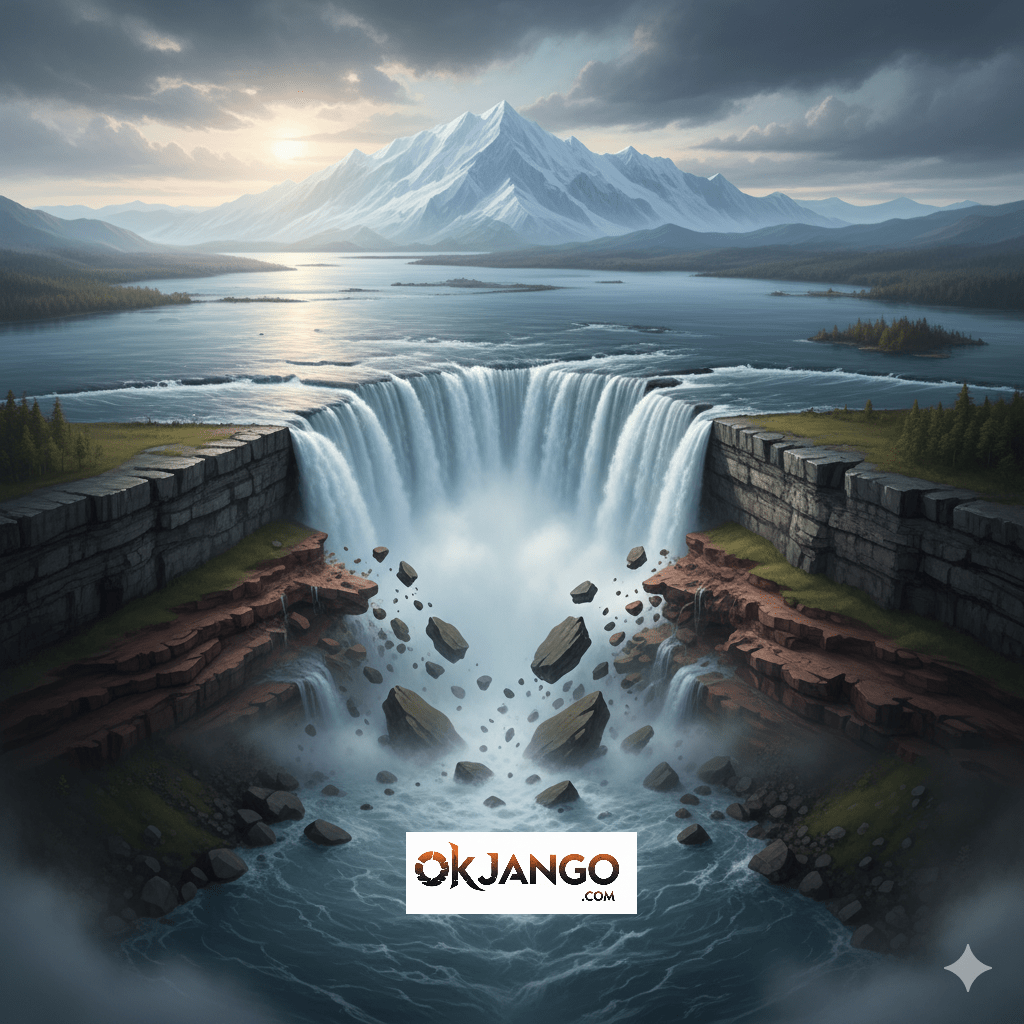
The river then flowed over a steep escarpment, a geological formation called the Niagara Escarpment, which consists of hard, erosion-resistant dolomite limestone on top of softer shale rock.
Over millennia, the powerful flow of water eroded the softer rock underneath, causing the harder caprock to break off in large chunks, and the falls to recede upstream. This ongoing process of erosion created the spectacular gorge we see today. The falls have moved nearly 7 miles (11 kilometers) from their original location.
The Three Falls: A Triumvirate of Power
Niagara Falls isn’t a single waterfall but a collection of three separate falls.
The most famous and largest of the three is the Horseshoe Falls, also known as the Canadian Falls, which curves in a dramatic horseshoe shape and is located primarily on the Canadian side.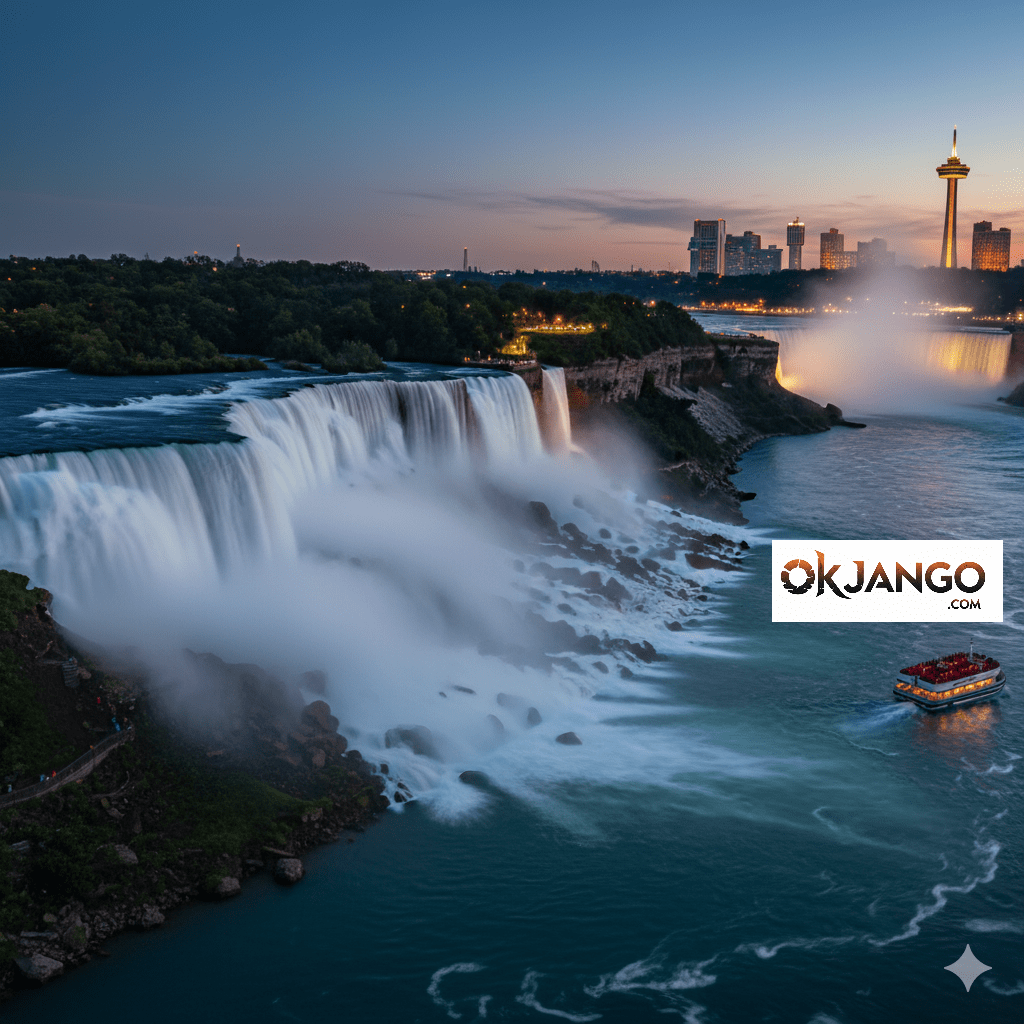
On the American side, you’ll find the American Falls.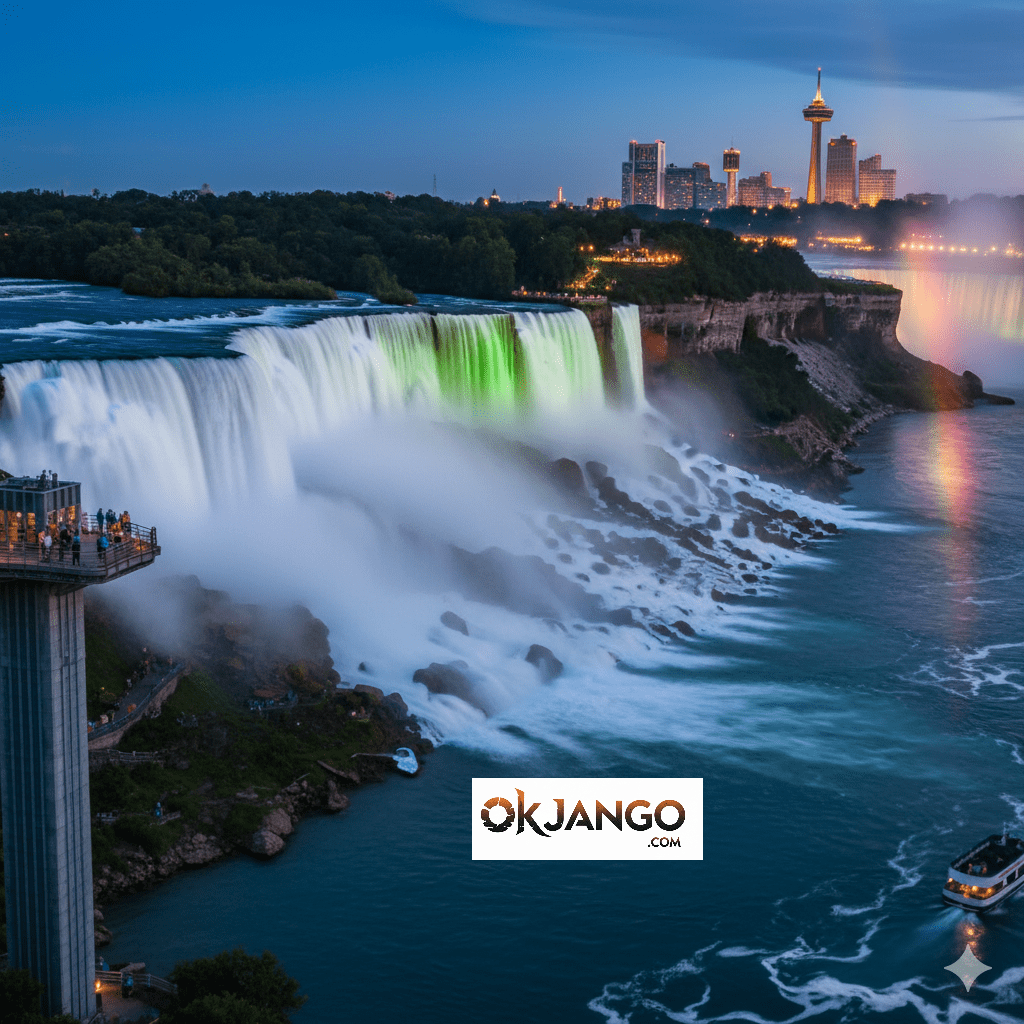
And the smaller, neighboring Bridal Veil Falls.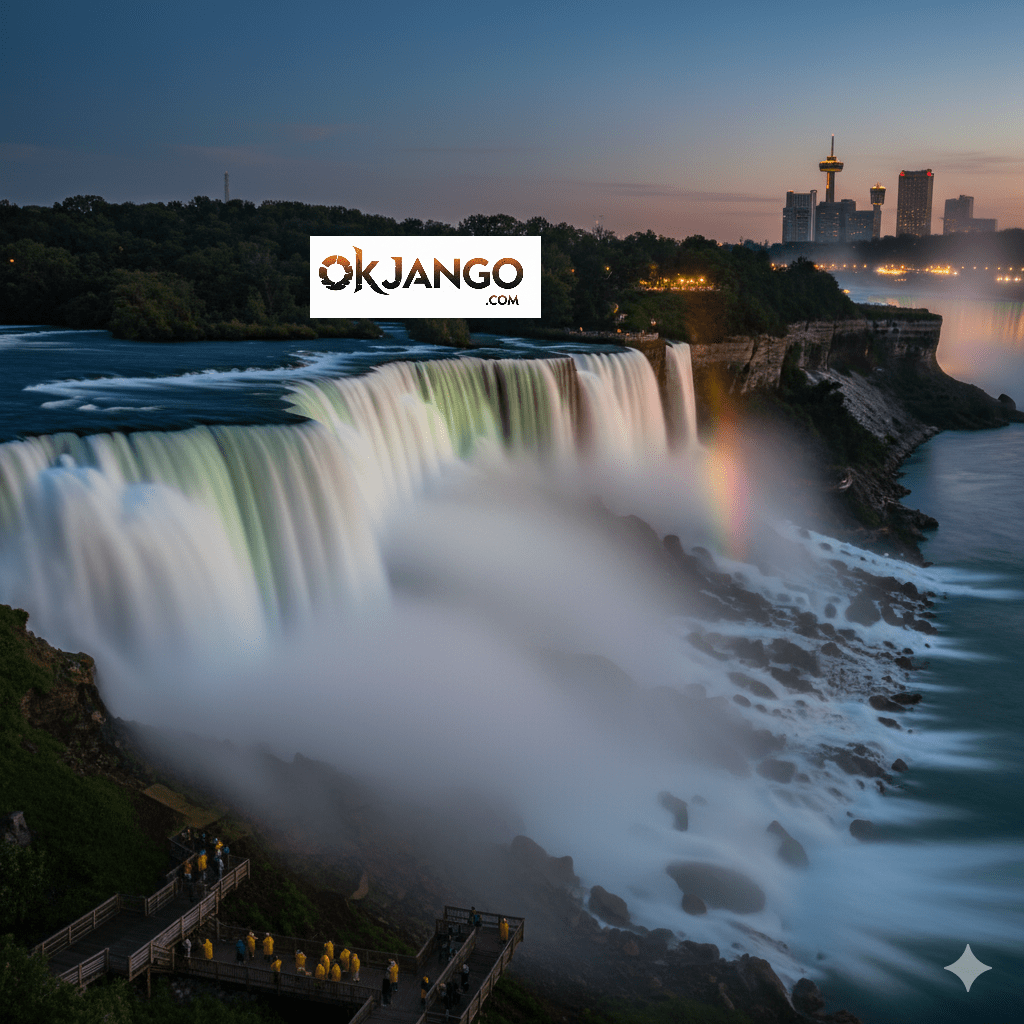
A Shared Resource: Water Management
The Niagara River is a vital waterway, and the water flow over the falls is carefully managed through the 1950 Niagara River Water Treaty between Canada and the United States.
The treaty ensures that the falls retain a significant volume of water for their scenic beauty, especially during the day and tourist season, while also allowing a substantial portion to be diverted for hydroelectric power generation. This diversion is a crucial source of clean energy for both countries.
Niagara’s Hydroelectric Power: A History of Innovation
The immense power of the Niagara River has been harnessed for hydroelectricity for over a century, making the region a pioneer in power generation.
While the waterfalls themselves are a natural wonder, the modern hydroelectric system is a marvel of human engineering.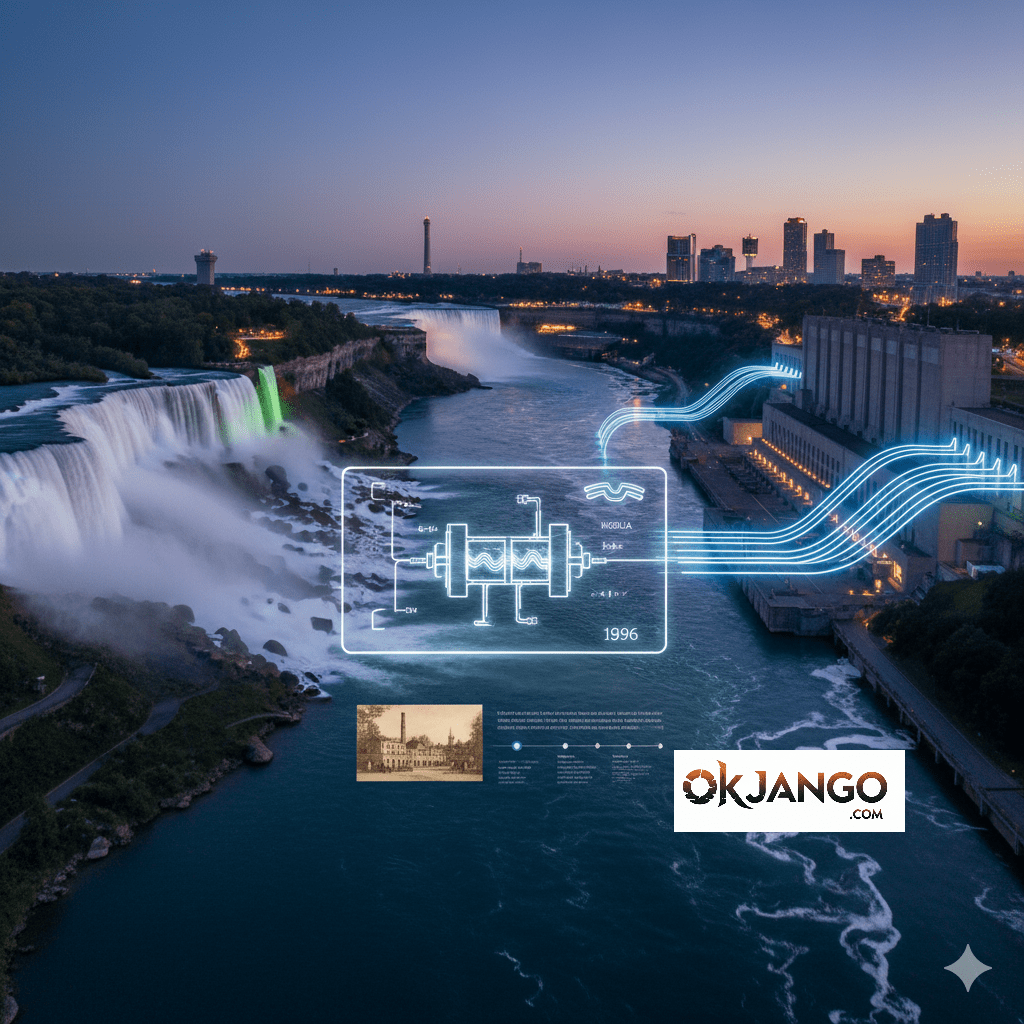
The story of Niagara’s power begins in the late 1800s, with innovators racing to turn the river’s force into a source of clean energy.
The first major milestone was in 1896, when a power plant on the American side, designed with Nikola Tesla’s alternating current (AC) technology, began transmitting electricity to Buffalo, New York, over 20 miles away.
This was the first time that long-distance AC power was used commercially and it fundamentally changed the world, kicking off the global electrification process.
Today, the power generation at Niagara is a joint effort between the United States and Canada, governed by the 1950 Niagara River Water Treaty. The treaty ensures a balance between preserving the falls’ scenic beauty for tourism and diverting water for energy production. During the day, particularly in the summer, a minimum flow is maintained over the falls. At night and during the off-season, more water is diverted to the power plants.
Major Power Plants
The key players in this massive operation are two large power plant complexes, one on each side of the border:
- On the Canadian side: The Sir Adam Beck Generating Stations (Beck I and Beck II) are a complex of hydroelectric power plants. Together, they are a major source of electricity for Ontario.
The Sir Adam Beck Pump Generating Station is also part of this complex, using a pumped-storage system to store water during off-peak hours and release it to generate power when demand is high. - On the American side: The Robert Moses Niagara Power Plant is New York State’s largest electricity producer. Located downstream from the falls in Lewiston, it provides up to 2.6 million kilowatts of clean electricity per year.
While many of the historic power plants have been decommissioned or turned into museums, like the Niagara Parks Power Station, the current facilities continue to generate a significant amount of clean energy. Combined, the power generated by the Niagara River accounts for a large portion of the power used in both New York State and Ontario.
A Magnet for Visitors: Statistics and Attractions in Niagara Falls
Niagara Falls is one of the world’s most popular tourist destinations, drawing between 12 and 14 million visitors each year.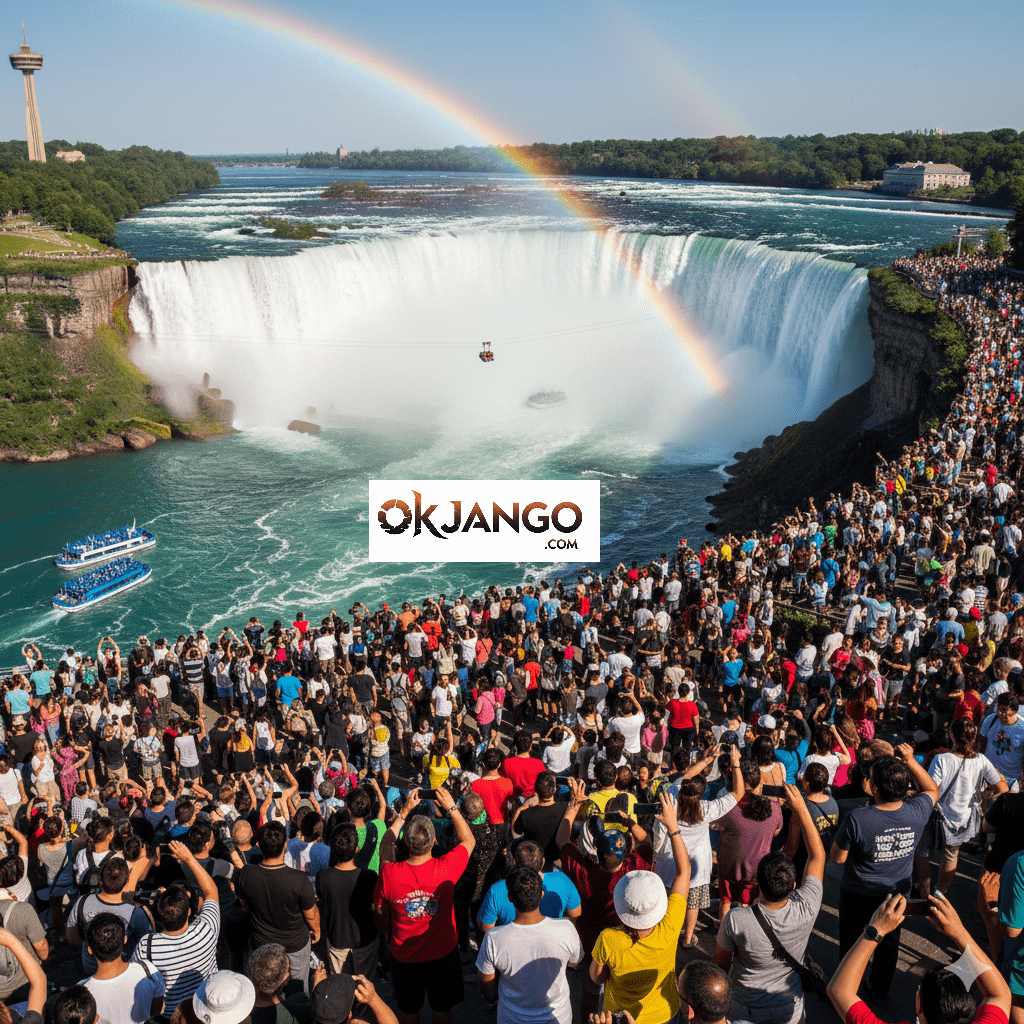
The region offers a wealth of attractions beyond the scenic views, with the Canadian side being particularly known for its vibrant and diverse entertainment.
Niagara Falls Attractions: A Side-by-Side Comparison
| Feature/Attraction | Canadian Side (Niagara Falls, Ontario) | American Side (Niagara Falls, New York) |
| Waterfalls Seen | Panoramic view of all three falls: Horseshoe Falls, American Falls, and Bridal Veil Falls. | Close-up view of the American Falls and Bridal Veil Falls. |
| Signature Boat Tour | Hornblower Niagara Cruises (formerly Hornblower Cruises) takes you to the base of the Horseshoe Falls. | Maid of the Mist boat tour goes into the Horseshoe Falls basin. |
| Behind the Falls Experience | Journey Behind the Falls offers a close-up perspective from observation decks and tunnels behind the falls. | Cave of the Winds allows you to stand directly under the Bridal Veil Falls. |
| Observation Tower | Skylon Tower provides a 360-degree view with a revolving restaurant. | Niagara Falls Observation Tower offers a viewing area into the gorge and a different perspective of the falls. |
| Newest Attractions | Niagara Takes Flight (a flying theater) and WildPlay Zipline to the Falls. | Niagara Falls State Park (the oldest state park in the U.S.). |
| Major Entertainment Hub | Clifton Hill features the Niagara SkyWheel, arcades, and various museums. | The area is more focused on natural parkland and trails. |
| Additional Attractions | Niagara Parks Power Station (a historic power plant museum) and the vibrant city with a casino. | Aquarium of Niagara and numerous hiking trails along the gorge. |
A Year-Round Spectacle: Seasonal Differences
The beauty of Niagara Falls changes with the seasons.
Summer is the peak tourist season, with warm weather, lush greenery, and the full force of the water flowing.
Autumn brings stunning fall colors to the surrounding parks.
Winter transforms the area into a breathtaking ice kingdom, with the falls partially frozen and coated in a thick layer of ice and snow, creating a magical, quiet atmosphere. Even in the depths of winter, the falls never completely stop flowing due to the immense volume of water.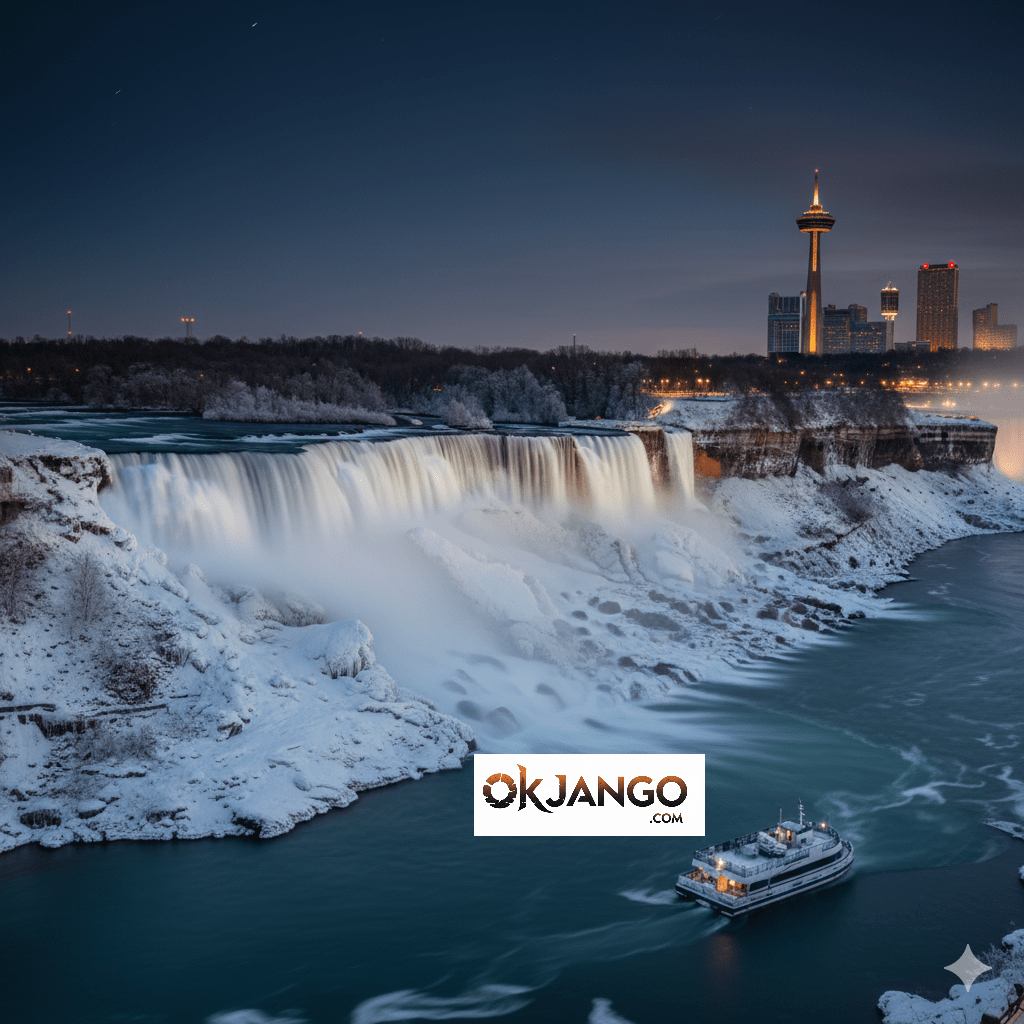
A Nightly Spectacle: The Niagara Falls Fireworks
A visit to Niagara Falls is not complete without witnessing the spectacular fireworks display over the illuminated cascades. While many believe the shows happen every night year-round, the schedule is actually seasonal, with the most frequent displays taking place during the peak tourist months.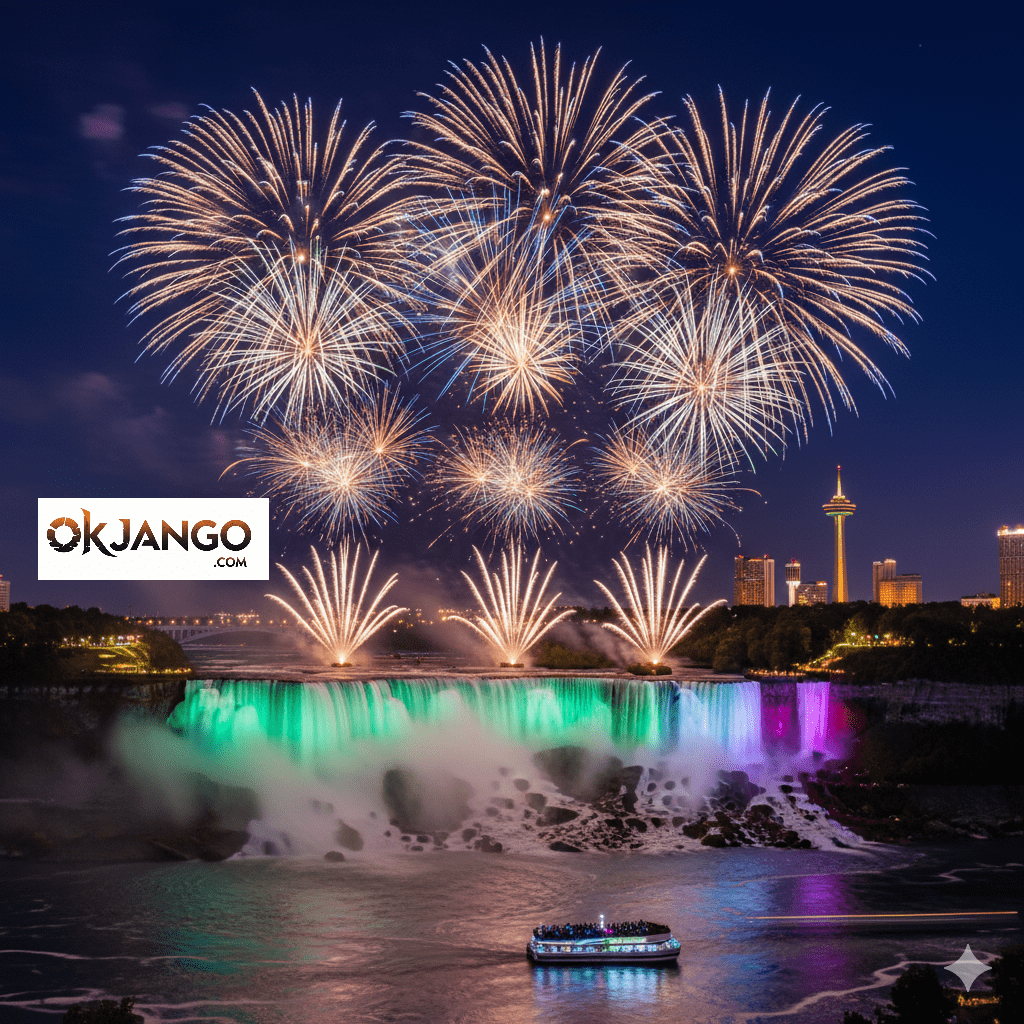
Summer & Early Fall Fireworks Series From late May to mid-October, Niagara Falls hosts its famous nightly fireworks series. During this period, you can expect a breathtaking show every single night at 10:00 PM, creating a perfect finale to a day of exploration.
Winter Festival of Lights In the quieter winter months, particularly during the Niagara Falls Winter Festival of Lights (from November to early January), the fireworks continue to light up the sky. During this festival, shows are held on weekends (Fridays and Saturdays) and then become a nightly occurrence during the holiday stretch from late December to early January.
Special Occasions In addition to the seasonal series, the falls celebrate major holidays with special, extended fireworks displays. These often include Canada Day (July 1st), U.S. Independence Day (July 4th), and New Year’s Eve (December 31st).
It is always a good idea to check the official Niagara Parks website or Niagara Falls Tourism website for the most up-to-date schedule, as shows are weather-permitting and subject to change.
Click below to know Interesting Fascinating Facts and World Wonders of Niagara Falls
https://okjango.com/travel/niagara-falls-fascinating-facts-and-world-wonders
Official Tourism & Attraction Websites
These are the best sources for up-to-date information on hours, tickets, and seasonal events.
- Niagara Parks (Canada): This is the official site for all Canadian side attractions, including Journey Behind the Falls, the Niagara Parks Power Station, and the Hornblower Niagara Cruises (also known as Niagara City Cruises).
- Niagara Falls State Park (USA): This is the official site for all American side attractions, including the Cave of the Winds and the Maid of the Mist boat tour.
- https://www.niagarafallsstatepark.com/
- Niagara Falls Tourism (Canada): A great resource for general information, accommodation, and the official fireworks schedule.
- https://www.niagarafallstourism.com/
- Niagara Falls USA: The official tourism site for the American side of the falls.
- https://www.niagarafallsusa.com/
Historical & Scientific Resources
These links provide deeper context on the geology and history of the falls.
- Niagara Falls Geology: The New York State Museum offers detailed information on how the falls were formed.
- Niagara Falls Public Library: Their digital collection is an excellent resource for historical images and documents related to the region.
Hydroelectric Power
- Niagara River Water Treaty: This article provides a summary of the 1950 treaty between the U.S. and Canada that governs water diversion.
- Robert Moses Niagara Power Plant: The Wikipedia page for this New York-based power plant provides extensive details on its operation and history.
- https://en.wikipedia.org/wiki/Robert_Moses_Niagara_Power_Plant
- Sir Adam Beck Hydroelectric Generating Stations: The Wikipedia page offers details on Canada’s side of the hydroelectric operation at Niagara Falls.
- https://en.wikipedia.org/wiki/Sir_Adam_Beck_Hydroelectric_Generating_Stations
Read more blogs at : Okjango.com


